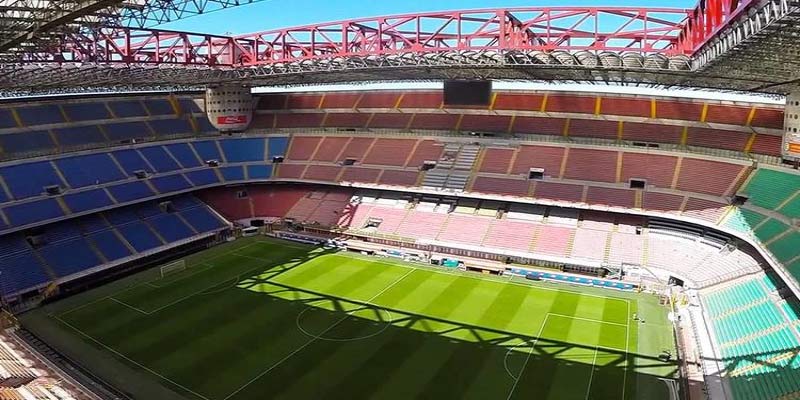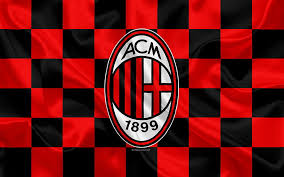
San Siro: Where Milan’s Passion and Legacy Collide
More than a stadium, San Siro is the beating heart of Milan’s football culture. Since 1926, it has witnessed epic derbies, legendary players, and unforgettable Champions League nights. Shared by AC Milan and Inter Milan, it remains a sacred arena of fierce rivalries and unifying passion. Discover why kkwin.company calls it a temple of football heritage.
Architectural Design of San Siro
San Siro’s architectural design is a remarkable blend of function and art, standing as a testament to the ingenuity of football stadium design. Initially envisioned by architect Ulisse Stacchini, the stadium encompasses various features that make it a marvel.
Unique Structure and Capacity
Featuring an iconic elliptical shape, San Siro was initially constructed using a robust concrete framework. The iconic arches, which line the outer and inner facades, serve both aesthetic and functional purposes. They allow natural light to penetrate while enhancing the stadium’s structural integrity.
With a capacity of approximately 75,000, the stadium remains one of the largest in Europe. This size not only provides fans with the chance to engage in the action but also plays a part in creating an awe-inspiring atmosphere that envelops the entire arena.
The Use of Innovative Materials
Throughout its various renovations, San Siro has continued to embrace innovative materials and methods. The use of modern glass and steel structures preserved the original façade while further enhancing its appearance.
Balconies, terraces, and panoramic vistas have been cleverly integrated throughout the stadium and allow unparalleled views of the pitch, seamlessly marrying modern architectural techniques with historical aesthetics.
Art and Culture Embedded in Design
While San Siro is primarily a sports venue, it has given artists and designers a blank canvas to express creativity through murals and installations. Through partnerships with local artists, the stadium exhibits art that commemorates both football history and cultural identity, making San Siro not merely a sports arena but a true cultural landmark.
San Siro: Home to AC Milan and Inter Milan
At its core, San Siro tells the intertwined story of two iconic clubs. Its walls echo with history, drama, and triumphs that define Italian football. From generation to generation, it endures as a living symbol—Bluff trong Poker and uncover its timeless legacy.
The Rise of AC Milan
Founded in 1899, AC Milan has a prestigious history coupled with a legacy that includes numerous titles, both domestically and in European competitions. The club’s association with San Siro has been characterized by triumphs, with legendary players like Paolo Maldini and Marco van Basten gracing the pitch.
AC Milan fans relish moments in the stadium where they can witness their heroes create magic, left humming the poignant tunes of victory as they surge through the iconic entrances on match days.
Inter Milan’s Esteemed Legacy
In contrast, Inter Milan, established in 1908, has forged its own identity and culture. The club, which values the “Nerazzurri” identity, shares the same sacred grounds. Players like Javier Zanetti and Giuseppe Meazza have adorned the famed black and blue stripes with grace and skill.
The shared history of two rival clubs creates a dynamic atmosphere at San Siro, transforming it into a crucible of passion and competition. Thousands of fans come together, united by football, yet divided by their love for opposing teams.
Collaborative Spirit and Rivalry
Despite the fierce rivalry that exists between these two clubs, there’s a mutual respect forged over decades of shared experiences at San Siro. Both clubs draw energy from the passionate interactions of their supporters.
The dual identity of San Siro exemplifies the spirit of collaboration in sports—where friendship and rivalry coexist, each contributing to the allure of this historic arena.
Visiting San Siro: A Guide for Fans
For football enthusiasts, visiting San Siro is nothing short of a pilgrimage. This enigmatic stadium not only boasts iconic matches and thrilling moments but also invites fans to immerse themselves in its rich history.
Getting There: Transportation Options
Reaching San Siro is convenient for fans arriving in Milan. Multiple public transportation options exist, including the Metro, which provides swift access to the stadium. It is approximately a 20-minute ride from the city center via Line M5.
For those preferring to drive, parking options are available, though they can be limited during match days. Utilizing taxis or ride-share services is often an efficient choice, especially during packed game nights.
Exploring the Museum
A visit to San Siro would be incomplete without exploring the stadium’s museum, which showcases its illustrious history. Fans can marvel at memorabilia ranging from historic jerseys to trophies that highlight the achievements of both AC Milan and Inter Milan.
Interactive displays and guided tours further deepen visitors’ understanding, pulling them into the narrative of those who walked the hallowed grounds before them.
Match Day Experience
The best way to experience San Siro is undoubtedly during match days. From the moment fans converge outside the stadium, the excitement builds. The palpable energy radiates from fans chanting in unison, creating a captivating atmosphere.
Purchasing tickets in advance is advisable, as these games often sell out quickly. With exceptional views of the pitch and opportunities to mingle with fellow fans in local bars and cafés, match day at San Siro is an experience steeped in fervor.
Renovations and Future of San Siro
As one of Italy’s pivotal sports landmarks, the future of San Siro is a topic that regularly stirs passion among supporters and stakeholders alike. The stadium has seen several renovations throughout its history to maintain its status at the forefront of football culture.
Embracing Modernity and Sustainability
Modernization efforts have focused on embracing sustainability and the integration of eco-friendly measures. Recent plans highlight initiatives to reduce the carbon footprint, ensuring that San Siro remains a monumental testimony to football culture in the years to come.
Innovative features like solar panels, improved drainage systems, and enhanced seating technologies are designed to elevate both the environmental efficiency and overall fan experience.
The Controversy of Demolition vs. Renovation
In recent discussions regarding the future of San Siro, varying perspectives have emerged, particularly about whether to renovate the structure or to construct a new stadium in its place. Advocates for renovation highlight preserving the cultural heritage while modernization enthusiasts posit the need for new, state-of-the-art facilities.
The debate represents a deeper examination of what San Siro symbolizes—the essence of football culture, rivalry, and unity. Whichever direction is chosen, the intrinsic value of San Siro will always resonate.
A Balancing Act
Finding balance is key. While structure and design must adapt to modern needs, it’s equally paramount to honor the legacy of San Siro. The conversations surrounding its future provide fans an opportunity to express their unwavering love for a stadium that has given them countless cherished moments.


